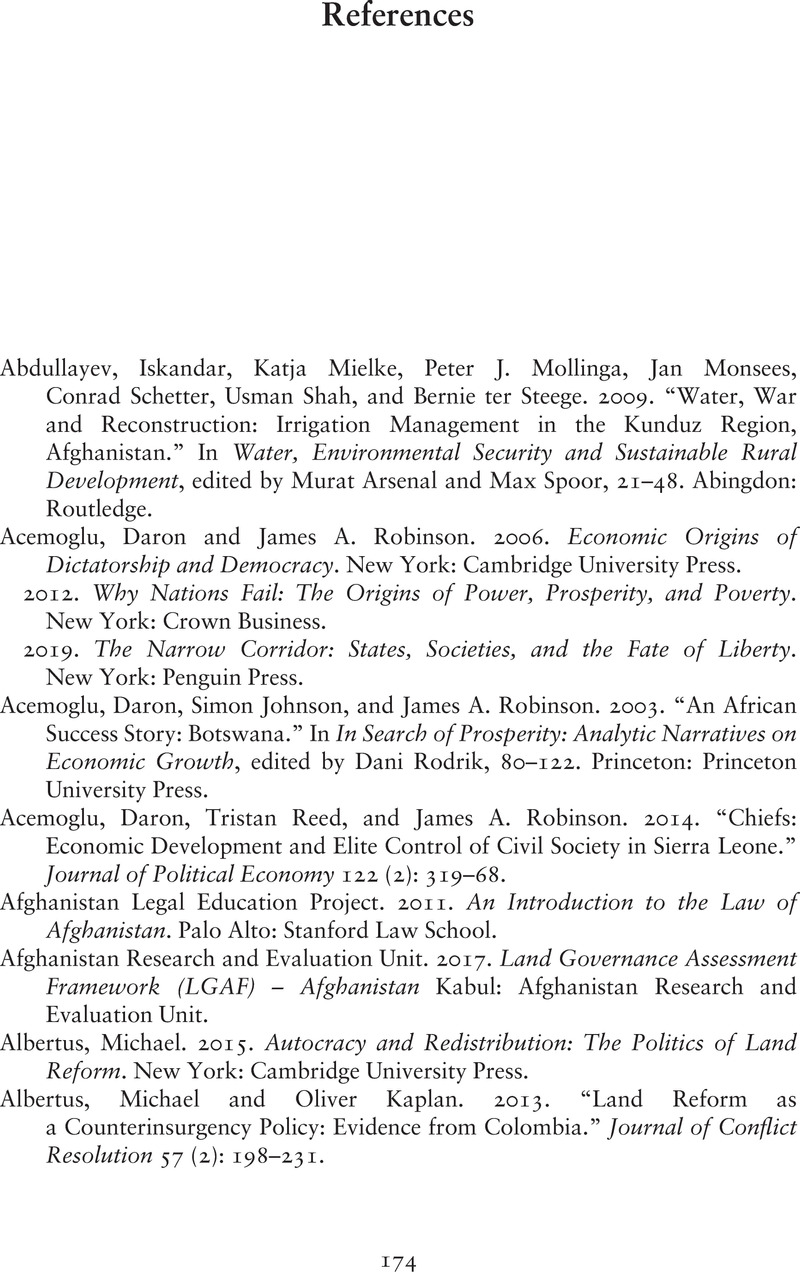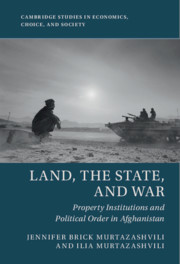Book contents
- Land, the State, and War
- Land, the State, and War
- Copyright page
- Dedication
- Contents
- Photographs and Drawings
- Maps
- Figures
- Tables
- Maps
- Acknowledgments
- Glossary
- Abbreviations
- Chronology of Events
- 1 Introduction
- 2 A Theory of Property Rights
- 3 Property Rights and State Building
- 4 Property Rights and War
- 5 Self-governance of Property Rights
- 6 Self-governance, War, and the Commons
- 7 Self-governance, Legal Titling, and the State
- 8 Are Property Rights a Cause or Consequence of Political Order?
- Appendix
- References
- Index
- References
References
Published online by Cambridge University Press: 20 August 2021
- Land, the State, and War
- Land, the State, and War
- Copyright page
- Dedication
- Contents
- Photographs and Drawings
- Maps
- Figures
- Tables
- Maps
- Acknowledgments
- Glossary
- Abbreviations
- Chronology of Events
- 1 Introduction
- 2 A Theory of Property Rights
- 3 Property Rights and State Building
- 4 Property Rights and War
- 5 Self-governance of Property Rights
- 6 Self-governance, War, and the Commons
- 7 Self-governance, Legal Titling, and the State
- 8 Are Property Rights a Cause or Consequence of Political Order?
- Appendix
- References
- Index
- References
Summary

- Type
- Chapter
- Information
- Land, the State, and WarProperty Institutions and Political Order in Afghanistan, pp. 174 - 195Publisher: Cambridge University PressPrint publication year: 2021



